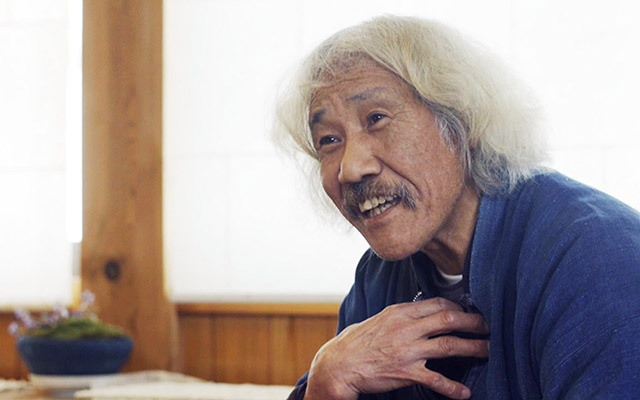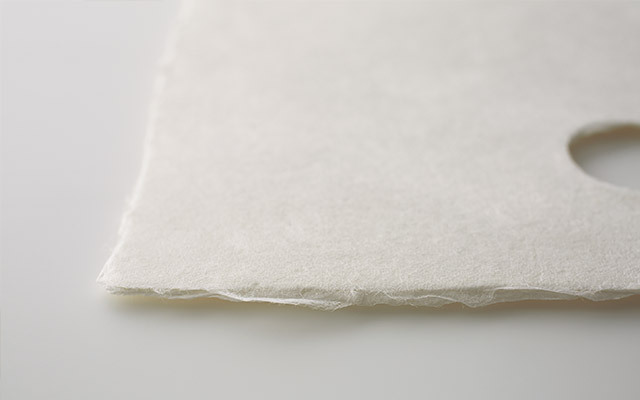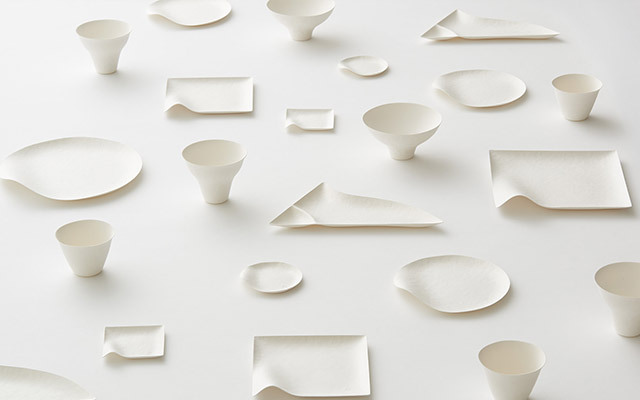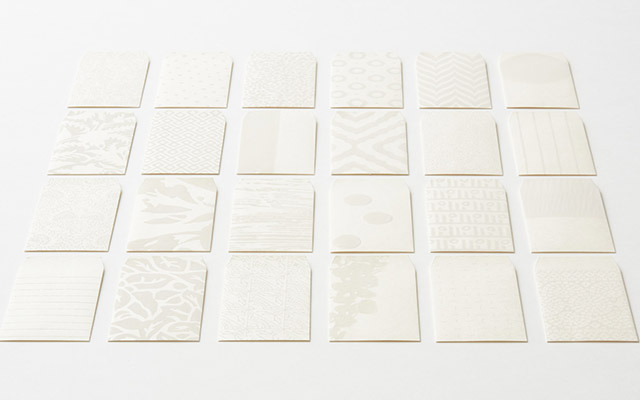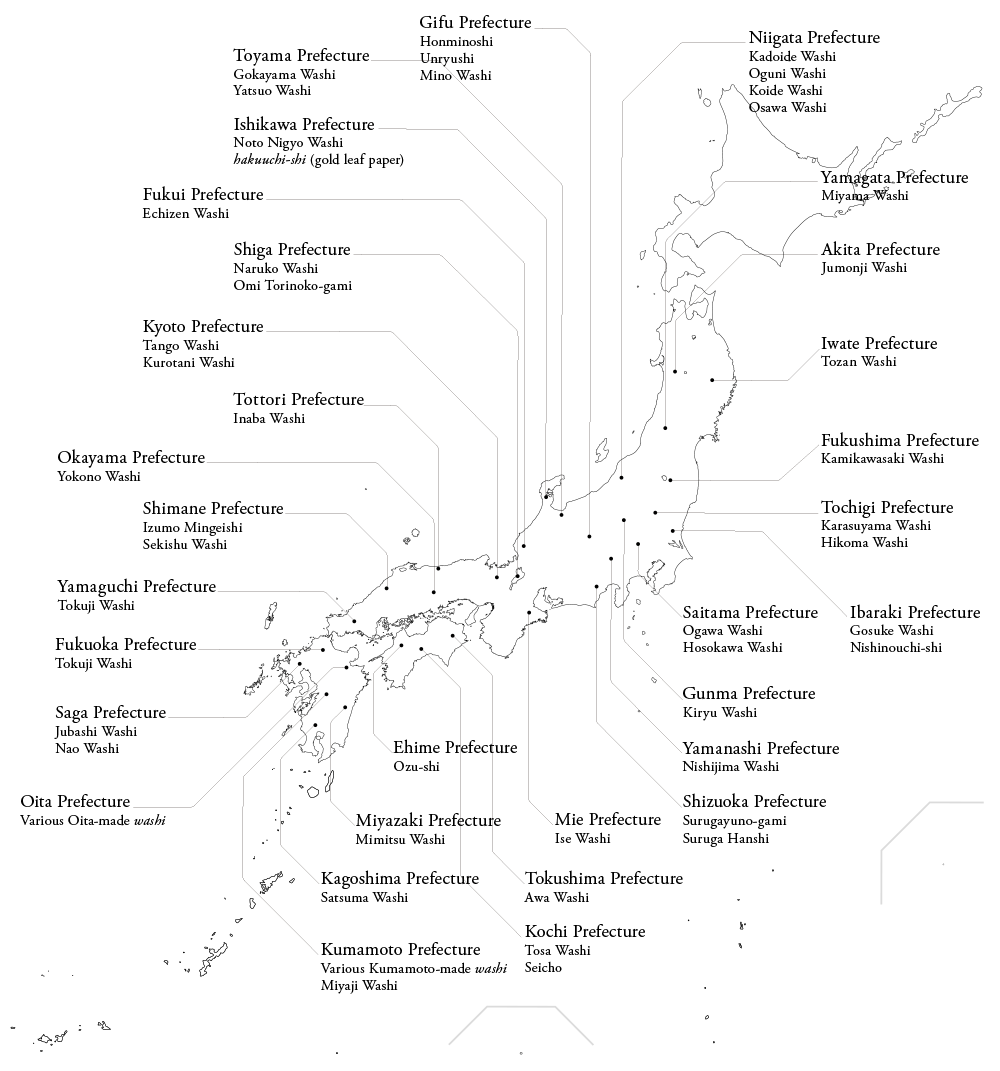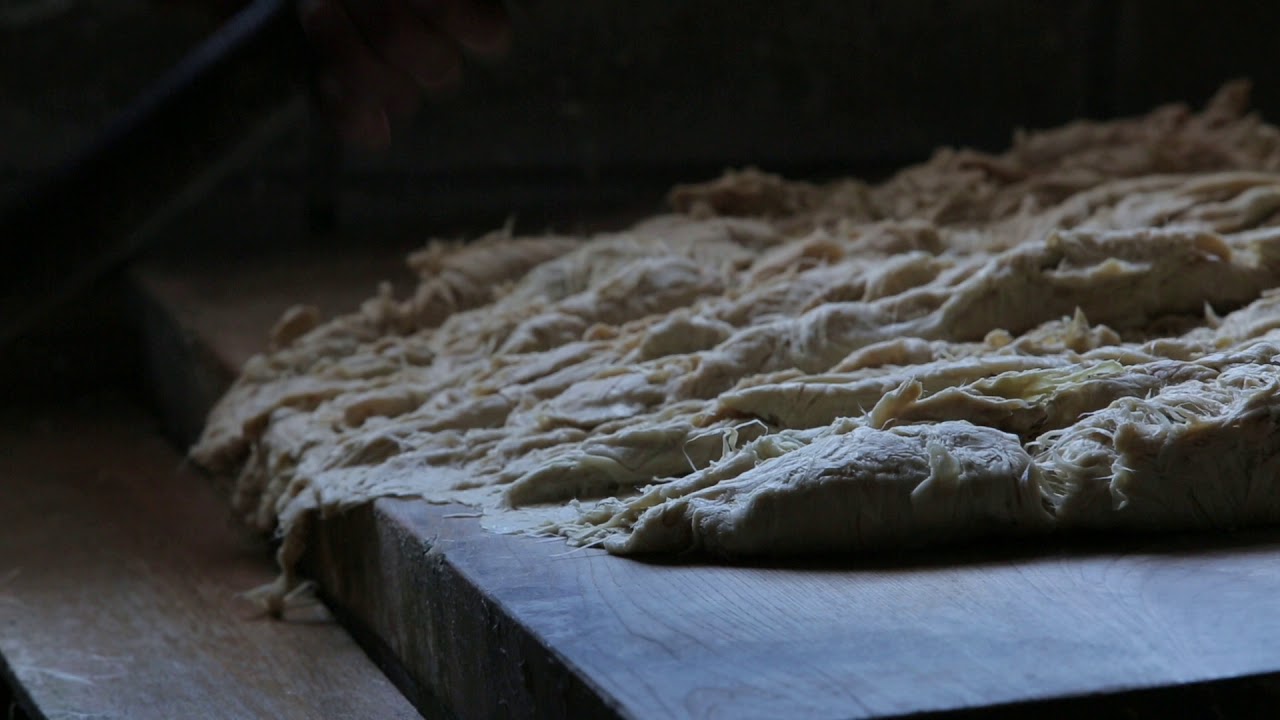
Paper was invented in China about two thousand years ago, and reached Japan around the seventh century by way of Korea. Japanese washi paper is characterized by being strong and pliable. The tame-zuki paper making method that was passed on to regions west of China is based on placing the pulp mixture onto a screen that is kept level. The fibers used are short and the resulting paper is less dense.
In contrast, washi, is typically made using the nagashi-zuki method, in which a viscous substance made from plants is added into the pulp mixture, and the screen is rocked back and forth and from side to side so that the mixture flows over the screen. This allows the paper to be made with longer fibers, which become tightly interwoven, resulting in a stronger product. This strong, thin paper is used not only for books, drawings, and paintings, but also as a material for architecture and everyday items including sliding paper screens (shoji) and partitions (fusuma), umbrellas, andon lamps, and garments.
When machine-made paper from the West began to be imported into Japan in the Meiji Period (1868–1912), people referred to Japanese paper as washi in order to distinguish it from Western paper.
Echizen Washi
Although washi has been made throughout Japan, there are certain production centers famous for quality, including Echizen, Mino, Sekishu, Tosa, and Inshu, which continue to make washi today. Of these, Echizen washi has been highly valued throughout history for its quality and ingenious design. Examples include Echizen-hosho and Echizen-torinoko paper, which were used by samurai and nobles for official purposes.
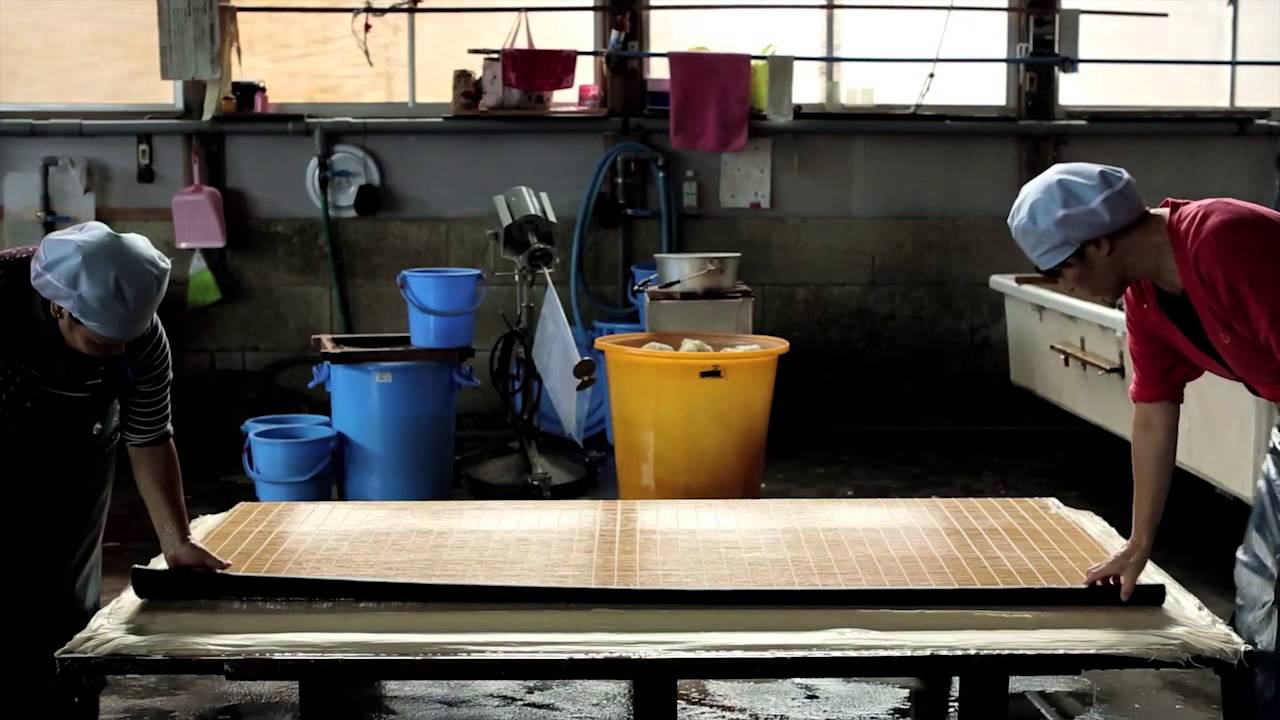
Echizen Washi Village, Fukui Prefecture
Stories on Paper | Papermaking Process No.09 | TAKEO
Kadoide Washi
During the Taisho Period (1912–1926), there were around forty washi papermakers in the Kadoide area of Niigata Prefecture, but by 1973, only Kadoide Washi remained. Washi is still made here today, beginning with the cultivation of paper mulberries (kozo), which are the main raw material for washi. The labels for the Kubota brand of Japanese sake are produced here. For Japan House São Paulo, Kadoide washi artisan Yasuo Kobayashi produced an innovative room partition made by coating a metal mesh with paper mulberry fibers.
Interview | Yasuo Kobayashi
Awagami Factory
In addition to continuing the tradition of making washi, Awagami Factory develops new techniques and conducts research into materials. Listening carefully to the needs of washi users, the factory produces washi oriented towards modern-day living spaces and uses. The continued evolution of washi is demonstrated by present-day demand for washi that is untrimmed, leaving edges that can be used, and innovations such as washi compatible with offset printing and inkjet printing.
Awagami Factory
Paper Tableware | WASARA
Manufactured using molded pulp, WASARA tableware is superbly designed, enabling Japanese elegance to be maintained when arranging dishes aesthetically for eating with chopsticks for parties and catered events. Conceived expressly for holding as you eat, WASARA tableware allows you to enjoy the delight of paper in subtle ways: how lightweight it is and how it feels in your hands, or on your lips. WASARA is made from fast growing, sustainable bamboo, and bagasse – a by-product of extracting the juice from sugar cane that is usually wasted.
Paper tableware by WASARA
Pochi-bukuro Gift Envelopes | Kamisoe
Pochi-bukuro gift envelopes, writing paper, and envelopes created with washi from Echizen, Mino, Sekishu, and Kyoto are dyed using mica, before being printed with patterns using shell-based gofun pigment. Incorporating mica into the washi gives the paper an elegant style. The white gofun printing communicates the careful handcraftsmanship of the product. Note the aesthetic sense of putting different whites—mica and gofun—together with the white of the washi paper.
Kamisoe
Types of Washi around Japan
Credits
Support: TAKEO Co., Ltd., amana inc., Awagami Factory, Japan Design Committee, WASARA, Kamisoe


